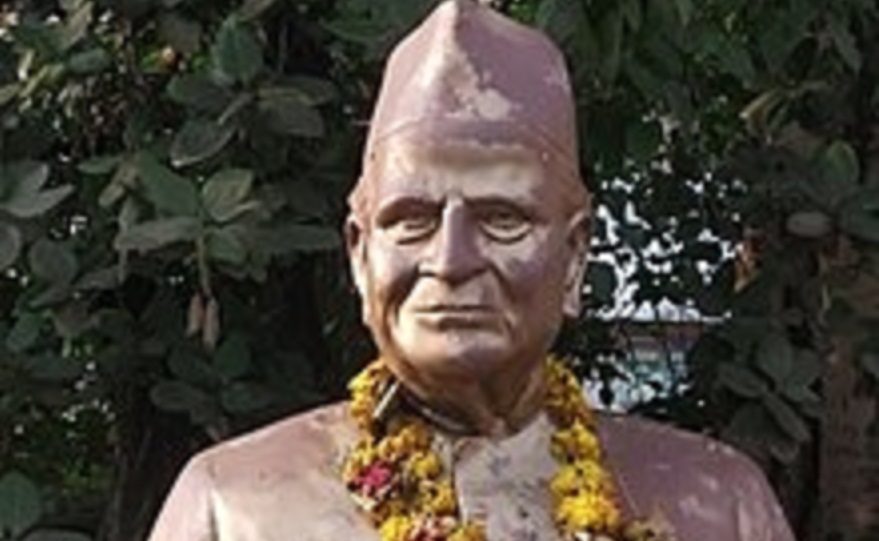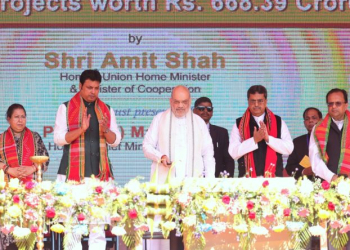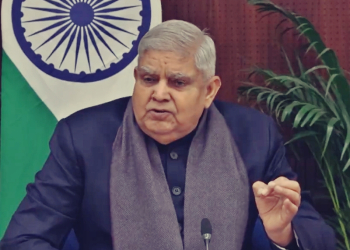New Delhi: It’s a pity that the life of Baba Prithvi Singh Azad has been relegated to a couple of paragraphs in Mahatma Gandhi’s biographies in connection with Mirabehn’s much-publicised infatuation for the revolutionary who became a Gandhian. But there was much more to Azad’s life than what one finds out from a reading of Gandhiana.
One of the founder members of the Ghadar Party in the United State and sent to jail multiple times by the British, Prithvi Singh Azad (1892-1989), who came from Lalru, a small town in what is today known as the Sahibzada Ajit Singh Nagar (Mohali) district of Punjab, was attracted to the freedom movement while he was in his teens.
A socialist revolutionary who later worked extensively for the Dalit community under the influece of Gandhi, a young Azad arrived in the US via Hong Kong, Singapore and the Philippines in 1912. There, he came in contact with Lala Har Dayal, a founder of the Ghadar Party, an organisation formed by Indians living in North America who aimed to liberate their mother country by means of an armed rebellion.
After helping in setting up ‘Hindustan Ghadar’, the mouthpiece of the party run from San Francisco, Azad set sail for India on S.S. Korea along with 150 other ‘Ghadarites’ to foment the rebellion his Ghadar Party leaders in America dreamed about.
They were arrested in Calcutta on December 7, 1914, Azad, along with the rest, was charged with treason in the First Lahore Conspiracy, condemned to a death sentence, which was commuted to imprisonment for life at the dreaded Cellular Jail in the Andamans.
During his incarceration in the Cellular Jail, Azad led a protest fast demanding humane living conditions for all prisoners. The protest continued for five months and Azad survived only because the authorities force-fed him.
Ironically, it was because of Azad’s protest that he was moved out of the Cellular Jail, which enabled him to escape from a moving train when he was being transferred from Rajahmundhry in Andhra Pradesh to the Nagpur Central Jail on November 30, 1922.
After his escape, carrying a reward on his head, he went into exile under the assumed name of Swamirao in the princely state of Bhavnagar in Saurashtra. He lived there for 16 years, running a popular gym called Ganesh Krida Mandal, where he also imbued the young men who joined the institution with the spirit of nationalism.
During this period of self-exile, Azad got close to nationalists such as Dr Narayan Damodar Savarkar, Bhagat Singh’s associate, Ganesh Raghunath Vaishampayan, and the surgeon at the Bhavnagar General Hospital, Dr P.V. Kane, who took good care of him.
Some time in 1930, according to the progressive historian Chinmohan Sehanavis, Bhagat Singh, who was then in jail in Lahore, got one of his associates, Dhanwantari, to locate Azad and get him to meet the other revolutionary, Chandra Shekhar Azad, at Allahabad’s historic Alfred Park.
The purpose of the meeting was to convince Prithvi Singh to go to Russia, establish contacts with the Communists there, and study the methods that enabled Lenin pull off the Bolshevik Revolution.
Prithvi Singh managed to evade the police and slip across to Russia, where he spent three years (a sojourn he chronicled in his book ‘Lenin Ke Desh Mein’), and then on his return he travelled across India for five years, plotting revolutionary strikes to no avail, only to realise by 1938 that it made practical sense to abandon his dreams and join the Congress.
With the help of the Congress historian and Andhra leader Pattabhi Sitaramayya, Azad was able to meet Gandhi at his Sevagram Ashram near Wardha, as UGC Emeritus Scholar Virendra Kumar says in his paper ‘Revisiting Gandhi in Our Contemporaneous World’. It was 10 p.m. on May 17, 1938.
Azad’s idea was to use Gandhi’s good offices to surrender to the British authorities becasue he constantly lived in the fear that one of his old comrades would betray him to the police.
Fortunately for Azad, Gandhi got interested in him when he heard about his work among young people in Bhavnagar and ensured, after long exchanges of letters that went up to the Viceroy, that he went to jail. Gandhi was assured by the government that Azad would get ‘A Class’ prisoner status.
It was Gandhi, in fact, who shared the details of this episode in an article headlined ‘The Fellow Pilgrim’ in his newspaper, ‘Harijan’, where he described Azad as a “great revolutionary”.
In jail, Azad spent much of his time spinning khadi yarn, reading and writing his autobiography, as advised by Gandhi. Azad in jail and Gandhi in his ashram would regularly exchange letters, where they discussed matters such as the importance of spinning, ahimsa and inner peace.
A year after Azad was jailed, Gandhi called him ‘A Prisoner Among Prisoners’ in an editorial note he wrote about him in ‘Harijan’. When World War II broke out in September 1939, Gandhi reached an agreement with the Viceroy to cooperate with the government in view of the exceptional circumstances. As part of a general amnesty, Azad was freed from jail on September 23, 1939, and he chose to join Gandhi at the Sevagram Ashram.
It was there that Mirabehn, the British admiral’s daughter who became Gandhi’s trusted aide, met Azad and fell in love with him while editing the English translation of his autobiography.
When she went to Gandhi to broach the discuss the possibility of her marriage with Azad, according to Mirabehn’s own account, the Mahatma agreed to the idea, provided Azad went along. But, sadly for Mirabehn, Azad had taken two vows: one, not to ever marry a foreign woman; and two, to postpone marriage till the country became free. And he was adamant on not abandoning them.
As the country moved towards independence, Azad became a member of the Constituent Assembly from Punjab and eventually got picked up by Bhim Sen Sachar as the state’s minister for labour and local self-government. In 1977, he was honoured with the Padma Bhushan, and after leading a busy public life, he passed away on March 5, 1989, at the age of 98.
In his autobiography published in English as ‘Baba Prithvi Singh Azad: The Legendary Crusader’, he wrote: “When I jumped from a running mail train in 1921, there was no knowing what would happen. Would I meet instant death or live to bring freedom to the country?” Azad lived — and how!
(IANS)





















